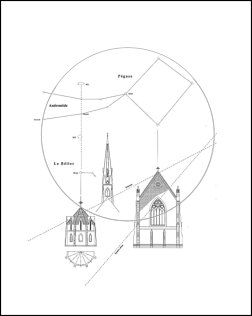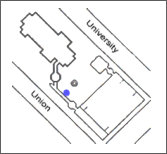



| Viewing Times |
|
||
|
Sept. 1 02:05 Sept. 15 01:10 Oct. 1 00:05 Oct. 15 23:05 Nov. 1 21:00 Nov. 15 20:05 |

|
||
|
The following text appears on the plaque: "In autumn we view a sparsely populated region in an outer spiral arm of our galaxy known as the Perseus arm. For this reason, the autumn sky has the fewest bright stars of any season. |
|||
Read more ...
The predominant autumn constellations are Perseus, a hero of Greek legend; Pegasus, Perseus' winged horse; the mythical princess Cassiopeia; queen Andromeda, her mother; and Aries, the ram. |
|||
| The blue mark indicates where to stand to see the alignment. |

|

See full website for detailed credits.
© Alison Tett, 2012. Website - Elliot Selick